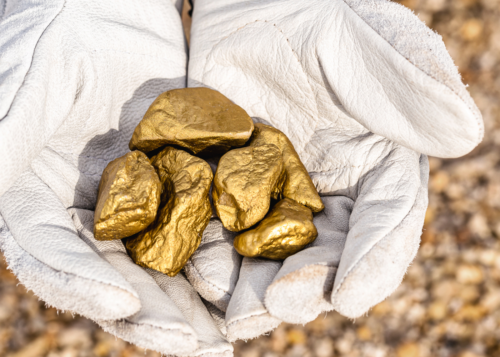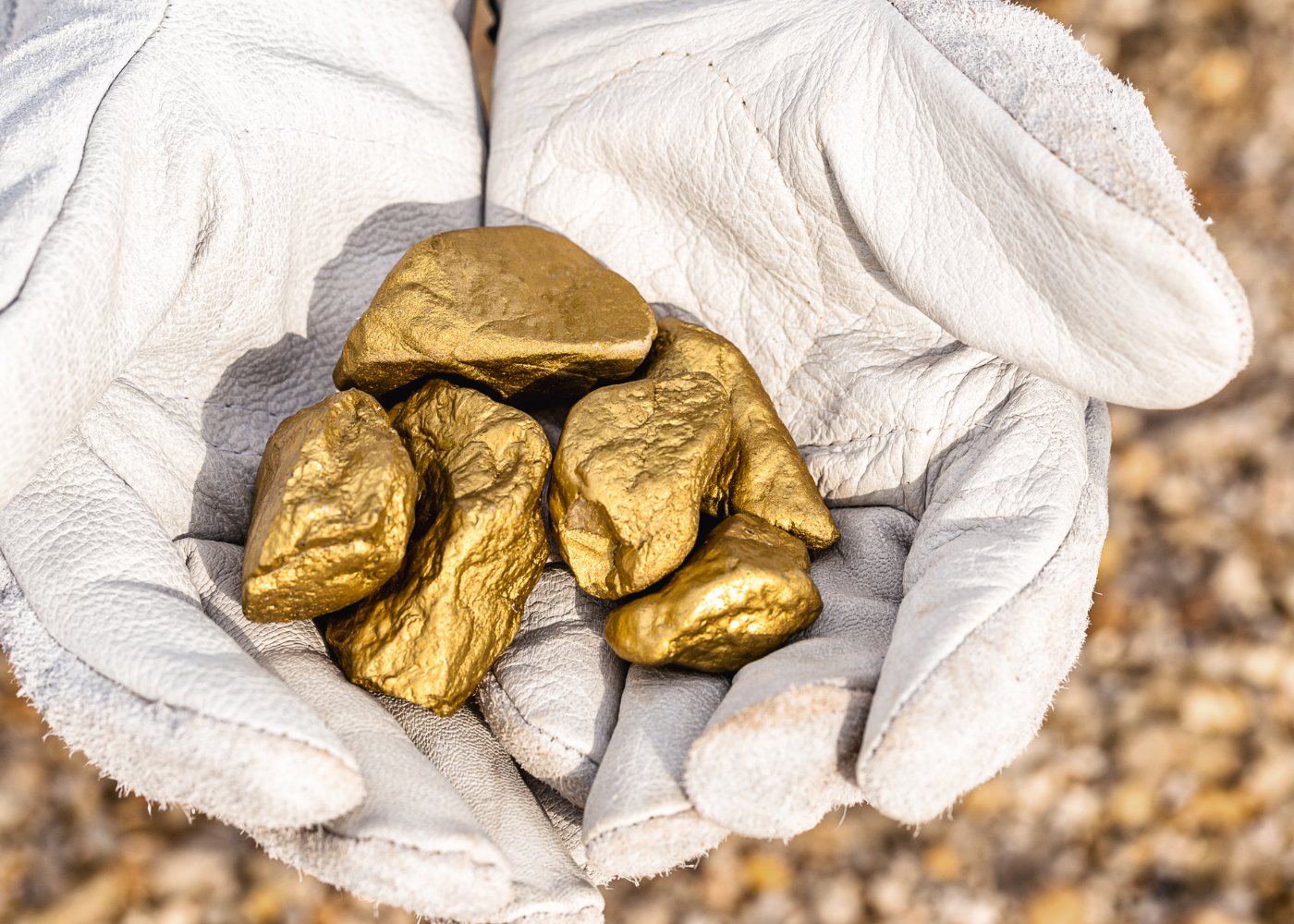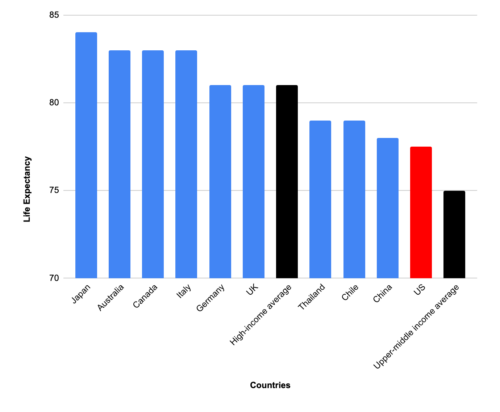Trade Fact of the Week: U.S. Geological Survey: 33,000 tons of gold out there under the hills
By: / 02.07.2024
FACT: U.S. Geological Survey: 33,000 tons of gold out there under the hills.
THE NUMBERS: Quantity of gold “above ground” worldwide –
| 2024: | 212,582 tons* |
| 2000: | 144,000 tons? |
| 1950: | 70,000 tons? |
| 1900: | 30,000 tons? |
| 1500: | ~5,000 – 15,000 tons? |
* World Gold Council estimate.
WHAT THEY MEAN:
Previewing the betrayals, the shattered dreams, and the body count as The Treasure of the Sierra Madre opens, author B. Traven has some look-homeward-angel, be-content-with-what-you’ve-got advice:
“The treasure which you think not worth taking trouble and pains to find, this one alone is the real treasure you are longing for all your life.”
Still: The August U.S. Geological Survey reports last week in its 2024 Gold Commodity Summary that as much as 33,000 tons of gold is lying around under rocks and hills in the U.S. alone. (Including 3,000 tons of currently recoverable reserves, 12,000 tons of known but currently unrecoverable ore, and another 18,000 tons of undiscovered lodes.) This in turn is “only a small portion” of total global reserves. With a price this week above $2,000 per ounce, the U.S. share alone would be worth about $2.2 trillion.
Should you quit your job and buy a shovel?
The sages of economics join Traven in loudly saying “No!” Here’s 18th-century econ. pioneer Adam Smith condemning speculators, amateur treasure-hunters, and professionals alike as “destined to bankruptcy and ruin,” in the appropriately titled Chapter 11 of The Wealth of Nations:
“Of all those expensive and uncertain projects which bring bankruptcy upon the greater part of the people who engage in them, there is none perhaps more perfectly ruinous than the search after new gold and silver mines. … [W]hen any person undertakes to work a new mine in Peru, he is universally looked upon as a man destined to bankruptcy and ruin, and is upon that account shunned and avoided by everybody.”
From another tradition entirely, 14th-century Tunisian polymath ibn Khaldun scornfully rejects persistent rumors that sixth-century Byzantines, or alternatively djinns and wizards, had buried huge lots of gems and precious metals in caves. He says the only ones who get rich on gold are con men swanning about the Maghreb selling phony maps and shares in non-existent mines. As to their dupes:
“Trying to make money from buried treasure is not a natural way to make a living. Many weak-minded persons hope to discover riches under the earth and profit from them … Their motive is their inability to earn money normally, through commerce, farming or crafts. They trust instead that they can grow rich without effort or trouble.”
In practice, ibn Kh. may have been basically right about get-rich-quick dreamers, but Smith was off-base on professional mining. The World Gold Council (a trade association of 32 of the world’s big gold-mining companies) reports 4,899 tons of gold ‘used’ in 2023, the largest annual total they have on record. About two-fifths of this, 2,168 tons, went to jewelers; investors bought about the same amount, with 1,040 tons going to central banks and 1,190 to private buyers. The rest divides between 298 tons to tech businesses for semiconductor wire bonding, infrared sensors, thermal protection for aerospace technologies, photovoltaics and solar cells, reflective satellite mirrors, etc.; 40 tons or so to dentists, and the rest to miscellaneous buyers. The WGC says that 1,800 of the 4,899 tons came from recycling, and the other 3,100 tons from mines.
Therefore, Smith is incorrect and lots of professionals make money digging up gold. The Council’s figures imply that a third of all currently circulating gold has been dug up since 2000, and the total — “about 212,852 tonnes” by their count — rises about 1% each year. Production is pretty diffuse by country: the Council and the USGS disagree slightly on totals, but concur that four countries produce more than 200 tons a year (China, Australia, Russia, and Canada), and another 10 or so are above 100 tons: the U.S. at 170 tons (124 tons from Nevada, 20 from Alaska), joined by Burkina Faso, Ghana, Indonesia, Mali, Mexico, South Africa, and Uzbekistan. USGS has the Peruvian mines Smith scoffed at 250 years ago producing 90 tons a year. Gold trade comes to about $450 billion per year — not far behind the WTO’s figure of about $625 billion in iron and steel exports, and about 2% of world goods trade — as metal flows through the London Bullion Market, the slightly smaller New York, Zurich, and Tokyo exchanges, Swiss metal refineries and financial institutions, Indian and Hong Kong investor portfolios and so forth. Switzerland is the largest trader, often both importing and exporting $90 billion worth in a year.
Could you, realistically, get a bit of this? Well, there’s still lots more gold beneath the ground than above it. World “reserves” in the technical sense of “recoverable without loss under current technology and mining and other costs” are 3,000 tons in the U.S. and 59,000 tons worldwide; adding in veins and lodes too expensive to get at, and extrapolating the USGS’ figure for currently unrecoverable and unknown lodes in the U.S. to the world suggests a world total above half a million tons.
But even the ore everybody knows about is hard and expensive to dig up. As an extreme but illustrative example, the Mponeng mine near Johannesburg is a hole 4 kilometers deep. The World Gold Council puts the current AISC (“All-In Sustaining Cost,” the average cost of digging up an ounce of gold) at $1,276. This allows substantial profits given a $2,076/oz. market price, but you’d need lots of capital to keep going, as well as very high up-front capital for opening a mine. So even if you could find one of USGS’ 33,000 tons, it might not pay to try for it.
Still, even Traven is equivocal. If his first sentence tells you that you’ll regret trying, his second wistfully suggests that you might want to make one last try:
“The glittering treasure you are hunting for day and night lies buried on the other side of that hill yonder.”

FURTHER READING
Data:
The U.S. Geological Survey’s 2024 gold report.
The U.S. Geological Survey has U.S. production, world production, trade, and price data for gold and eight-three other minerals — everything from platinum-group metals and gemstones through iron and tin and on to salt, gravel, and peat — from the early 20th century to 2023.
All the gold in the world:
USGS says there are 59,000 tons of currently recoverable gold “reserves” worldwide underground, including the 3,000 tons in the U.S. Gold being resistant to tarnish, it stays around, except for the fraction hidden in booby-trapped tombs, buried in pirate chests, or dropped down manholes. The World Gold Council helpfully illustrates their “around 212,852 tonnes” estimate with a picture of a 212,000-ton solid gold cube 73 feet on each side. It would be worth about $15.5 trillion. One ton of gold would be a cube with sides about 15″ long.
A counterpoint, attempting to estimate the total gold available to kings, sultans, pirates, merchants, &c. from 1492 to the present, guesses pre-1900 stocks were quite low.
The Swiss news service looks at Switzerland’s gold vortex, human rights compliance, money laundering, and policy.
And the Mponeng mine, deepest in the world.
Nothing new under the sun:
Ibn Khaldun’s Muqaddimah.
Smith’s Wealth of Nations.
Ibn Khaldun’s con men have modern descendants: the Nevada Mining Commission warns a gullible public to steer clear of get-rich-quick schemes and “dirt pile swindles.”
And last:
If you must — The U.S. Geological Survey has advice on where to go to find gold, and how to do it.
But be warned — B. Traven’s Treasure of the Sierra Madre.
ABOUT ED
Ed Gresser is Vice President and Director for Trade and Global Markets at PPI.
Ed returns to PPI after working for the think tank from 2001-2011. He most recently served as the Assistant U.S. Trade Representative for Trade Policy and Economics at the Office of the United States Trade Representative (USTR). In this position, he led USTR’s economic research unit from 2015-2021, and chaired the 21-agency Trade Policy Staff Committee.
Ed began his career on Capitol Hill before serving USTR as Policy Advisor to USTR Charlene Barshefsky from 1998 to 2001. He then led PPI’s Trade and Global Markets Project from 2001 to 2011. After PPI, he co-founded and directed the independent think tank ProgressiveEconomy until rejoining USTR in 2015. In 2013, the Washington International Trade Association presented him with its Lighthouse Award, awarded annually to an individual or group for significant contributions to trade policy.
Ed is the author of Freedom from Want: American Liberalism and the Global Economy (2007). He has published in a variety of journals and newspapers, and his research has been cited by leading academics and international organizations including the WTO, World Bank, and International Monetary Fund. He is a graduate of Stanford University and holds a Master’s Degree in International Affairs from Columbia Universities and a certificate from the Averell Harriman Institute for Advanced Study of the Soviet Union.







